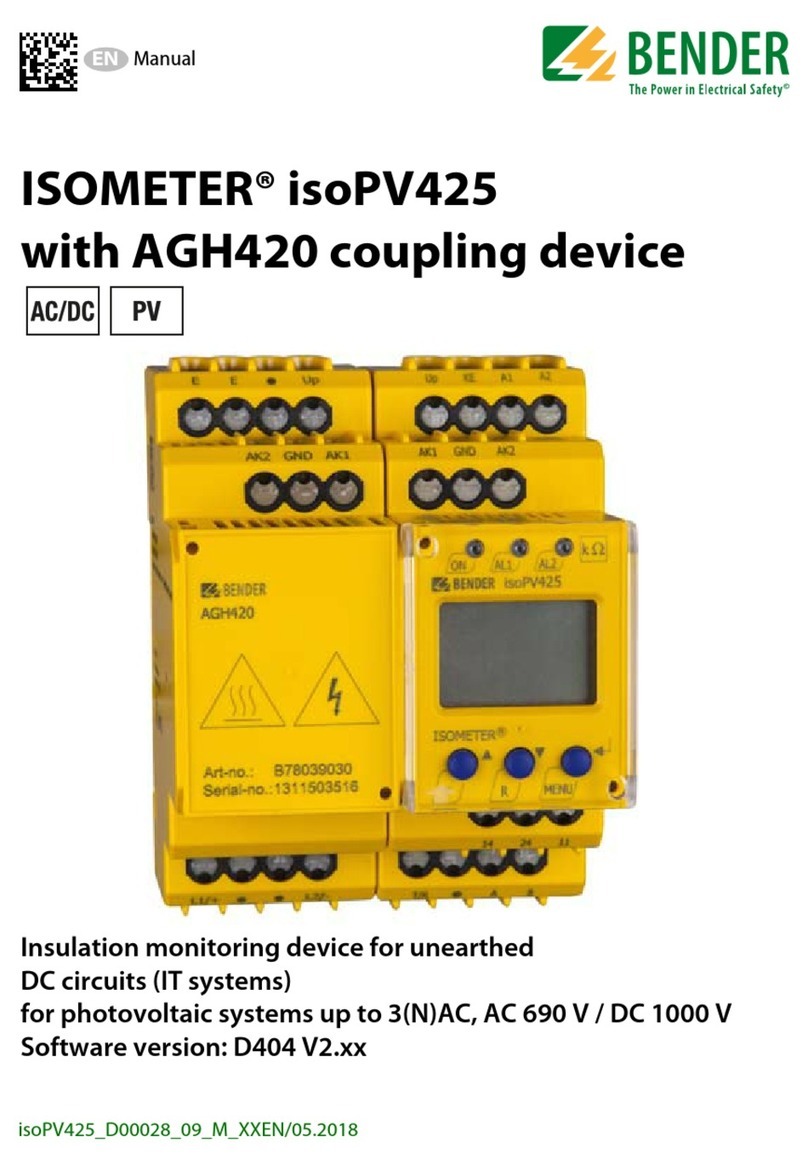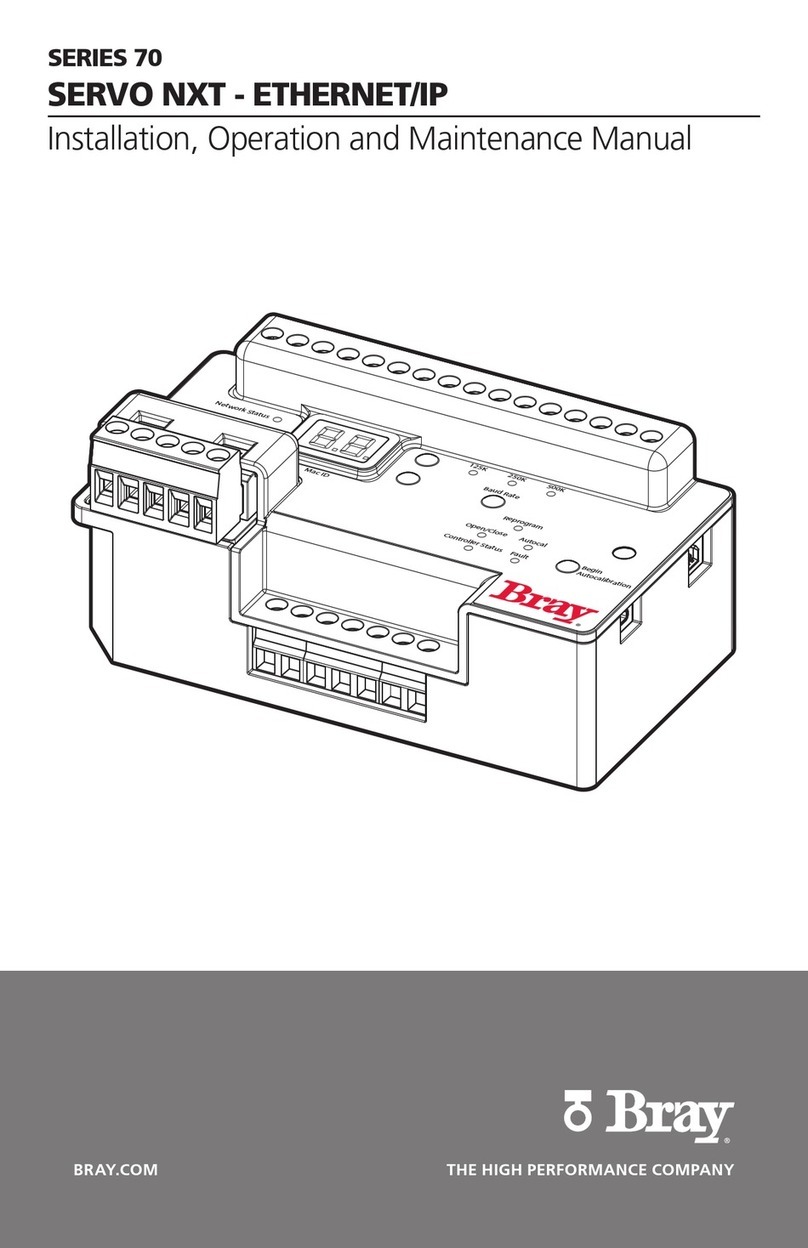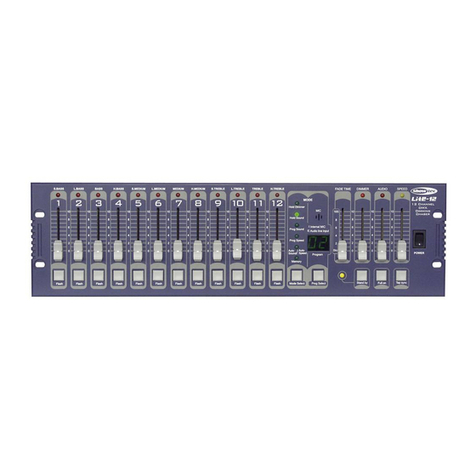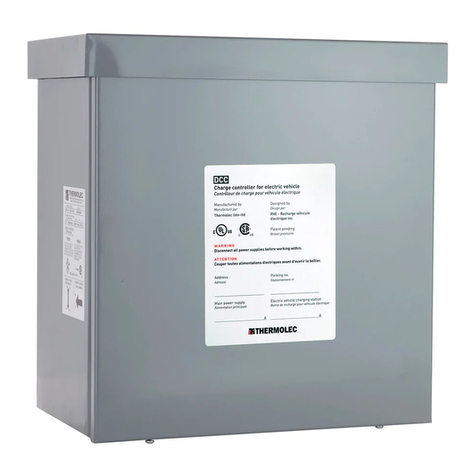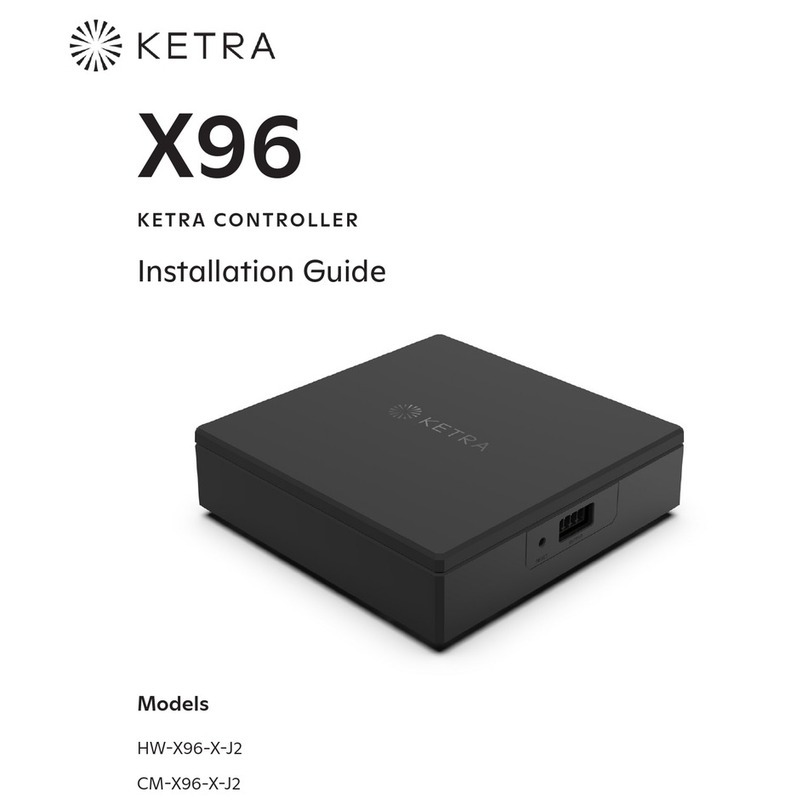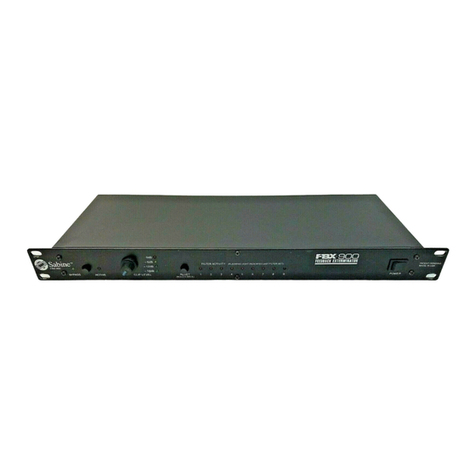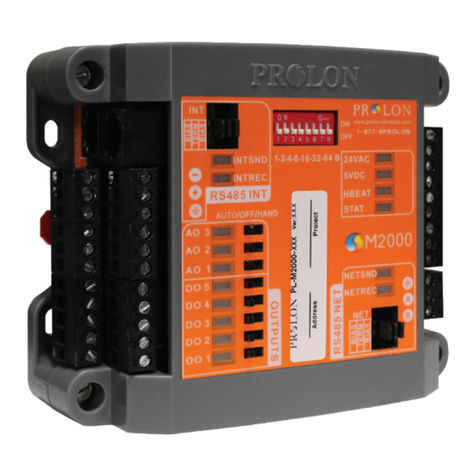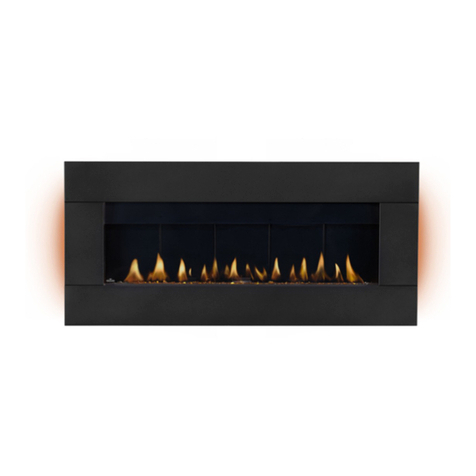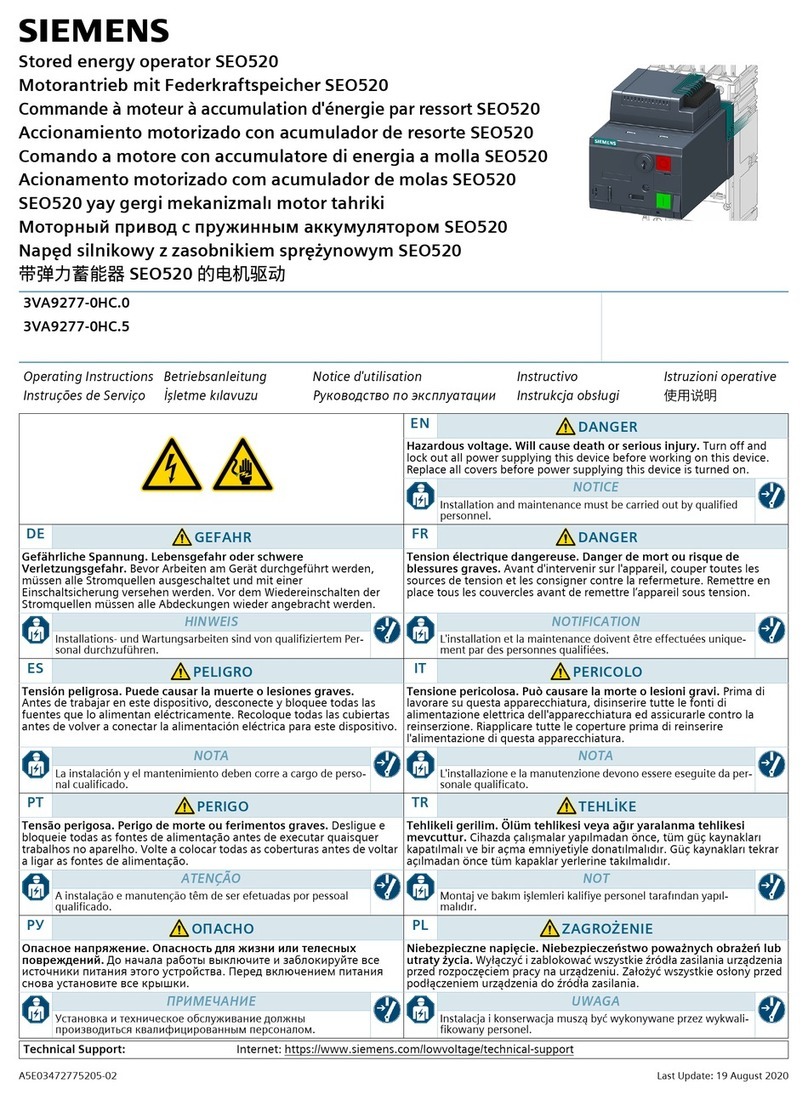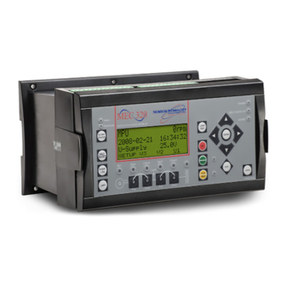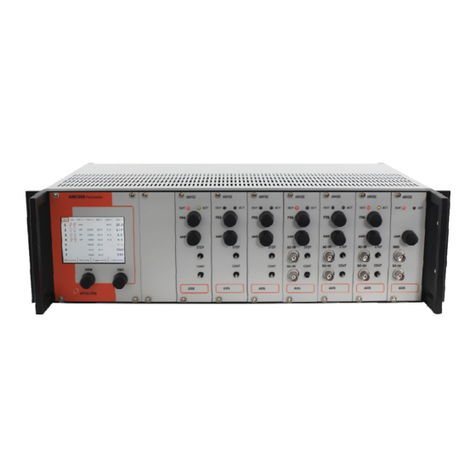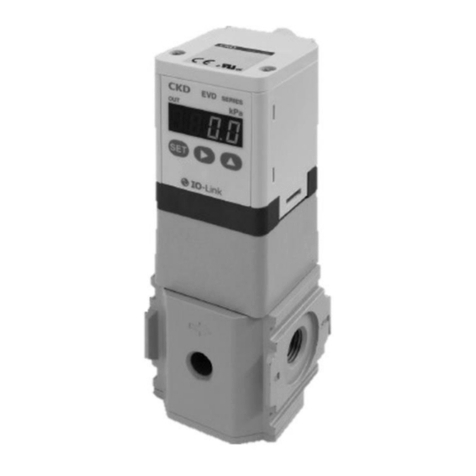Bender ICC1324 User manual

Image similar
Manual ENICC1324_D00436_00_M_XXEN / 05.2022
ICC1324 charge controller
Charge controller for charging stations and wallboxes for
electric vehicle charging

2 ICC1324_D00436_00_M_XXEN / 05.2022
Service and support for Bender products
First-level support
Technical support
Carl-Benz-Strasse 8 • 35305 Grünberg • Germany
Telephone: +49 6401 807-760
0700BenderHelp *
Fax: +49 6401 807-629
E-mail: support@bender-service.de
Available on 365 days from 7.00 a.m. to 8.00 p.m. (MEZ/UTC +1)
* Landline German Telekom: Mon-Fri from 9.00 a.m. to 6 p.m.: 6.3 cents/30 sec.; remaining time: 6.3
cents/min.
Mobile phone: higher, depending on mobile phone tari
Repair service
Repair, calibration and replacement service
Londorfer Strasse 65 • 35305 Grünberg • Germany
Telephone: +49 6401 807-780 (technical issues) or
+49 6401 807-784, -785 (commercial issues)
Fax: +49 6401 807-789
E-mail: [email protected]
Field service
On-site service
Telephone: +49 6401 807-752, -762 (technical issues) or
+49 6401 807-753 (commercial issues)
Fax: +49 6401 807-759
E-mail: eldservice@bender-service.de
Mon-Thu 7.00 a.m. to 4.00 p.m., Fri 7.00 a.m. to 1 p.m. (MEZ/UTC +1)

ICC1324_D00436_00_M_XXEN / 05.2022 3
ICC1324 charge controller
Table of contents
1 General instructions .........................................................................5
1.1 How to use this manual..............................................................................................5
1.2 Indication of important instructions and information ...................................5
1.2.1 Signs and symbols........................................................................................................5
1.3 Training courses and seminars.................................................................................5
1.4 Delivery conditions.......................................................................................................5
1.5 Inspection, transport and storage ..........................................................................5
1.6 Warranty and liability...................................................................................................6
1.7 Disposal of Bender devices........................................................................................6
1.8 Safety.................................................................................................................................6
2 Function...............................................................................................7
2.1 Intended use...................................................................................................................7
2.2 Product features (depending on the variant).....................................................7
2.3 Product description......................................................................................................8
2.4 Functional description ................................................................................................8
2.4.1 General functions..........................................................................................................8
2.4.2 Load current and cooling control
(temperature monitoring)..........................................................................................9
3 Dimensions and mounting ........................................................... 10
4 Connection ....................................................................................... 11
4.1 Connection conditions............................................................................................. 11
4.2 Connection to type 1/type 2 plugs .....................................................................11
4.2.1 Connection plug connections...............................................................................11
4.2.2 Charging system with type 2 socket-outlet.....................................................12
4.2.3 Connection locking actuators ...............................................................................14
4.3 Connectivity.................................................................................................................15
4.3.1 Master/Slave connection......................................................................................... 15
4.3.2 USB configuration interface (CONFIG) ...............................................................15
4.3.3 Ethernet interfaces ....................................................................................................15
4.3.4 WiFi interface (depending on the variant)........................................................15
4.3.5 LED service.................................................................................................................... 15
4.3.6 230 V power supply................................................................................................... 15
4.3.7 Contactor connection...............................................................................................16
4.3.8 Weld check ...................................................................................................................16
4.3.9 Alternative connection of switching contact contactor..............................17
4.3.10 PE monitoring..............................................................................................................18

4 ICC1324_D00436_00_M_XXEN / 05.2022
4.3.11 Control Pilot (CP) and Proximity Pilot (PP) connections..............................19
4.3.12 I/O extension................................................................................................................19
4.3.13 Emergency opener ....................................................................................................19
4.3.14 Residual direct current monitoring module (RDC-M)...................................19
4.3.15 Connectivity with Modbus meters ...................................................................... 19
4.3.16 Gateway variants with modem.............................................................................20
4.3.17 Antenna socket........................................................................................................... 20
5 Configuration and testing............................................................. 21
5.1 Configuration...............................................................................................................21
5.1.1 Local configuration of parameters ......................................................................21
5.1.2 Remote configuration of parameters................................................................. 23
5.1.3 Factory settings...........................................................................................................23
5.1.4 Testing and system boot process ........................................................................23
5.1.5 Connectivity to the backend .................................................................................23
5.1.6 Plug locking and unlocking....................................................................................25
5.1.7 Authorisation and charging................................................................................... 25
5.1.8 Cybersecurity...............................................................................................................25
6 Technical data.................................................................................. 26
6.1 Tabular data .................................................................................................................26
6.2 Declaration of conformity.......................................................................................30
6.3 Ordering information ...............................................................................................31
6.4 Document revision history ..................................................................................... 32

ICC1324_D00436_00_M_XXEN / 05.2022 5
ICC1324 charge controller
1 General instructions
1.1 How to use this manual
This manual is intended for qualified personnel working in electrical engineering and electronics!
Part of the device documentation, in addition to this manual, are the enclosed
"Safety instructions for Bender products".
Read the manual before mounting, connecting and commissioning the device.
Always keep the manual within easy reach for future reference.
1.2 Indication of important instructions and information
I Danger! Indicates a high risk of danger that will result in death or serious injury if not avoided.
I Warning! Indicates a medium risk of danger that can lead to death or serious injury if not avoided.
I Caution! Indicates a low-level risk that can result in minor or moderate injury or damage to property if
not avoided.
i
Information can help to optimise the use of the product.
1.2.1 Signs and symbols
Disposal Temperature range Protect from dust
Protect from moisture Recycling RoHS directives
1.3 Training courses and seminars
www.bender.de/en -> Know-how -> Seminars.
1.4 Delivery conditions
The conditions of sale and delivery set out by Bender apply. These can be obtained from Bender in printed or
electronic format.
The following applies to software products:
"Softwareklausel zur Überlassung von Standard- Software als Teil von Lieferungen,
Ergänzung und Änderung der Allgemeinen Lieferbedingungen für Erzeugnisse und
Leistungen der Elektroindustrie" (software clause in respect of the licensing of standard
software as part of deliveries, modifications and changes to general delivery conditions
for products and services in the electrical industry)
Die Elektroindustrie

6 ICC1324_D00436_00_M_XXEN / 05.2022
General instructions
1.5 Inspection, transport and storage
Check the shipping and device packaging for transport damage and scope of delivery. The following must be
observed when storing the devices:
1.6 Warranty and liability
Warranty and liability claims in the event of injury to persons or damage to property are excluded in case of:
Improper use of the device.
• Incorrect mounting, commissioning, operation and maintenance of the device.
• Failure to observe the instructions in this operating manual regarding transport, commissioning,
operation and maintenance of the device.
• Unauthorised changes to the device made by parties other than the manufacturer.
• Non-observance of technical data.
• Repairs carried out incorrectly
• Use of accessories and spare parts not recommended by Bender
• Catastrophes caused by external influences and force majeure.
• Mounting and installation with device combinations not recommended by the manufacturer.
This operating manual and the enclosed safety instructions must be observed by all persons working with the
device. Furthermore, the rules and regulations that apply for accident prevention at the place of use must be
observed.
1.7 Disposal of Bender devices
Abide by the national regulations and laws governing the disposal of this device.
For more information on the disposal of Bender devices, refer to
www.bender.de/en -> Service & support.
1.8 Safety
If the device is used outside the Federal Republic of Germany, the applicable local standards and regulations
must be complied with. In Europe, the European standard EN 50110 applies.
I Danger! Risk of fatal injury due to electric shock! Touching live parts of the system carries the risk of
• A fatal electric shock
• Damage to the electrical installation
• Destruction of the device.
Before installing and connecting the device, make sure that the installation has been de-energised. The rules
for working on electrical systems must be observed.

ICC1324_D00436_00_M_XXEN / 05.2022 7
ICC1324 charge controller
2 Function
i
Local access to the charge controller
Local access to the charge controller is possible either as operator or as manufacturer. Further details are
described in chapter 5.1.1.
Operator access is possible via the http://192.168.123.123/operator:
- User name: operator
- Password: yellow_zone
The manufacturer can access the manufacturer area via the URL http://192.168.123.123/manufacturer:
- User name: manufacturer
- Password: orange_zone
i
The default passwords should be changed to prevent unauthorised access.
2.1 Intended use
The ICC1324 charge controller, hereinafter referred to as "charge controller", is the main component of a
charging system. It is intended for use in charging stations and wallboxes for electric vehicle charging. The
charge controller controls type 1 and type 2 socket-outlets as well as attached cables. It enables a setup that
complies with the requirements of current standards, e.g. IEC 61851-1 and IEC 62955.
2.2 Product features (depending on the variant)
• Charge controller in accordance with IEC 61851-1 (mode 3 charging)
• Master and slave operation configurable
– Setting up charging stations with two charging points: 1 charge controller as data gateway with
4G modem and 1 charge controller as slave without 4G modem
• Dynamic load management to optimally distribute the available power among all charging points
and signal the maximum power to the vehicle
• Patented residual direct current monitoring module (external RCD type A required), different cable
lengths can be selected
• Integrated emergency opener for actuator control (locking/unlocking)
• Can be integrated in single- or three-phase systems up to 3x 32 A
• OCPP 1.5 and OCPP 1.6 compliant with JSON, SOAP
• Integrated 4G modem
• 3 USB interfaces:
– 1 CONFIG interface (type B) for local configuration and installation of software updates
– 2 USB host interfaces (type A)
• Control Pilot and Proximity Pilot communication (acc. to IEC 61851-1)
• Additional SCHUKO socket-outlet control
• Meter interface: Modbus TCP and RTU
• External Modbus interface for remote control via energy management systems
• Additional inputs and outputs for extended control of the charge controller
• Internal temperature sensor to reduce the charging current depending on the ambient tempera-
ture
• ISO 15118 Powerline Communication (PLC) for plug & charge, autocharge and load management
systems

8 ICC1324_D00436_00_M_XXEN / 05.2022
Function
• Integrated WiFi module and two Ethernet interfaces
• Integrated DC 12 V voltage source for customer-specific applications
• Supply voltage AC 230 V
2.3 Product description
The charge controller monitors the internal hardware of charging systems such as the meter, the user inter-
face module or the socket-outlet. It can be operated as an "always-on system" that is always connected to a
mobile network. The variants with a 4G modem support the 4G mobile phone standard.
Communication with a backend system is possible via the OCPP application protocol. All specified messages
in OCPP are supported as well as some vendor-specific extensions based on the DataTransfer message.
Integration tests with the backend implementations of providers (e.g. has-to-be, Virta and NewMotion) have
been carried out successfully.
Refer to "Ordering details" for product variants.
2.4 Functional description
The charging system consists of an RCD type A and a contactor. These are directly connected to a type 1 or
type 2 socket-outlet, or to an attached cable with a type 1 or type 2 plug (see chapter "Charging system with
type 2 socket-outlet").
2.4.1 General functions
• The charging system can be equipped with a meter. A Modbus meter is required for digital reading
of the energy consumption. The Modbus RTU wires are attached directly to the charge controller.
Alternatively, a meter can be connected to an Ethernet interface via Modbus TCP.
• An AC 230 V power supply is needed for operation.
• An RFID module can be used for easy user interaction.
• Power flow toward the vehicle is enabled by enabling the contactor via an integrated 230 V control
relay in the charge controller.
• Using a micro SIM card (not included in the scope of delivery):
The SIM card slot (available on data gateways with a 4G modem only) is located on the printed cir-
cuit board (terminal E) of the charge controller. The SIM card can have a PIN number which can be
configured via the Operator tab. The APN settings for the SIM card can also be configured via the
Operator tab.
• Data gateways with a 4G modem feature an SMA connector for a 4G antenna on the printed circuit
board.
• For fault current detection in an AC charging system, the charge controller features an integrated
residual direct current monitoring module (RDC-M) which uses an externally connected current
transformer. With the integrated monitoring of the DC fault current, only an RCD type A is required
in the charging system.
• Data exchange between the electric vehicle and the charging system is possible via ISO 15118 com-
pliant Powerline Communication (PLC).
• Dynamic load management (DLM):
The charge controller comes with a DLM software, which is fully usable independent of a backend
connection. It detects which charging current is applied to which phase and thus avoids the occur-
rence of peak loads and unbalanced loads in the mains supply. Maximum number of charging
points in a network: 250.

ICC1324_D00436_00_M_XXEN / 05.2022 9
ICC1324 charge controller
• Data management and control functionality of the charge controller:
– Termination of the charging process after tripping of the residual current device (RCD) due to a
DC fault current ≥ 6 mA.
– Detection of critical fault currents by the RCM sensor. For the vehicle owner, this can be an early
warning, provided that the charge controller is connected to an energy management system
and that it supports this function.
i
The charge controller with a residual direct current monitoring module (RDC-M) only works in combination
with a measuring current transformer (to be ordered separately).
2.4.2 Load current and cooling control
(temperature monitoring)
The charge controller is equipped with a temperature sensor, which allows the temperature in the environ-
ment of the charge controller to be estimated. Based on this estimation it is possible to dynamically reduce
the charging current or even suspend charging. This feature can serve to maintain the temperature inside the
charging system within the permissible range for the components used in a charging system. Two tempera-
ture thresholds for charging current reduction and charging interruption can be set via the Manufacturer tab.
i
The actual temperature is affected by heat generated by the controller itself.

10 ICC1324_D00436_00_M_XXEN / 05.2022
Dimensions and installation
3 Dimensions and installation
Abb. 3–1 Dimensions in mm
i
Red marks: Possible fastening points
i
Fastening recommendation:
Fillister head screws: 4 x M 2.5
Torque specification: 0.36 Nm
I Caution! To avoid surface stress (jamming) in the PCB, make sure that it is mounted flush with the sur-
face.
114
106
120
Ø 3,1
5
25
36
45
65
85
94
105
125
130
25,5 4,5
131,6

ICC1324_D00436_00_M_XXEN / 05.2022 11
ICC1324 charge controller
4 Connection
4.1 Connection conditions
I risk of electric shock! Parts of the system may be live (charge controller terminals up to 230 V, charging
station 400 V). Before touching parts of the system, ensure that it has been de-energised.
I Caution! Risk of injury from sharp-edged terminals! Handle the PCB and terminals with care.
i
Information:
• reference level for Control Pilot (CP communication) must be at the same level as the power supply
(IEC 61851 series of standards).
• Lay cables only inside the wallbox/charging station and not in parallel with power cables.
• Cable lengths (except Modbus, Ethernet, Power IN and charging cable): < 3 m.
• Maximum cable length Ethernet/Fast Ethernet: 100 m.
• Maximum cable length Modbus: 250 m.
• The Ethernet shield is directly connected to PE.
i
For further information on connection, refer to the manuals of the accessories (e.g. CTBC17).
4.2 Connection to type 1/type 2 plugs
4.2.1 Connection plug connections
L1 L1
L3
NPE
L2/N
L1
CS CP
PE
PP
CP
PE
L1 N
L3
L2
L2
N
PE

12 ICC1324_D00436_00_M_XXEN / 05.2022
Connection
4.2.2 Charging system with type 2 socket-outlet
Wiring diagram
I Caution! Switching contact contactor and weld check at terminal M are only suitable for mains volt-
age (230 V)! Not permitted for SELV/PELV voltages.
N
L3
L2
L1
PE
M
–
+
q
CP
PP
PE
NL1
L2
L3 PE
CP
B Mod.
PP
PE
A Mod.
A
0 V
12 V
24
B
14
HS2
23
A
13
HS1
K
NC
NC
Opto1+
Opto2+
NC
NC
Opto1-
Opto2-
L
N
M
WA
34
WB
33
p
H
V
m
o
AB C DE
F
HG
M
N
LKJ

ICC1324_D00436_00_M_XXEN / 05.2022 13
ICC1324 charge controller
Legend
A PE, Modbus meter, CP, PP K Locking, control relay GPIO
B Connection Ethernet (ETH2) L Optocoupler input
C Connection Ethernet (ETH1) M Weld check, relay for contactor control rated for
230V/4 A
D 2x USB type A (1, 2) N Power supply AC 230 V
E Micro SIM card slot (only available for variants with 4G modem)1mRCD type A
F LED service
G Antenna socket 4G (only available for variants with 4G modem1)oMeasuring current transformer (CT) with plug
H Conguration interface USB type B pContactor
qType 2 socket-outlet
J Connection measuring current transformer (CT)
¹ Data gateways with 4G modem: ICC1324-Connect Plus and ICC1324-Connect.
Terminal assignment
A
0V DC 12V voltage source for
customer-specic application
K
23 Relay 23: Relay contacts GPIO (12V)
12V 24 Relay 24: Relay contacts GPIO (12V)
PE Input PE A Actuator A: Locking actuator output negative
PE Input PE B Actuator B: Locking actuator output positive
B Mod. Modbus meter B HS2 Actuator HS2: Locking input actuator switch
A Mod. Modbus meter A HS1 Actuator HS1: Locking 12V output actuator switch
CP Control Pilot 14 Relay 14: Relay contacts GPIO (12V)
PP Proximity Pilot 13 Relay 13: Relay contacts GPIO (12V)
M
WA Weld check input L1
L
Opto1- Optocoupler input 1 12V negative
33 Relay 33: Switching contact
contactor
Opto1+ Optocoupler input 1 12V positive
WB Weld check input N Opto2- Optocoupler input 2 12V negative
34 Relay 34: Switching contact
contactor
Opto2+ Optocoupler input 2 12V positive
NN Neutral conductor
L1 230 V supply (phase 1)
i
The 230 V supply (terminal N), the weld check input (terminal M, WA) and the switching contact contactor
(terminal M, 33) must be connected to the same phase (L1) to ensure protection against overvoltage!

14 ICC1324_D00436_00_M_XXEN / 05.2022
Connection
4.2.3 Connection locking actuators
Type 2 socket-outlet (actuator type) Actua-
tor
A HS1 B HS2
Socket-outlet actuator wiring
• Mennekes (31016, 31023, 31024, 31038)
• Bals (801191-801195, 80300, 9743205000,
9743211000)
• Walther Werke (9743211000)
• Harting Hella
Wire 3
(///)
Wire 1
(/)
Wire 2
(//)
• Walther Werke Eco Slim 32 A (9743205180)
with connecting cable (790000001)
Wire 1
(black)
Wire 3
(blue)
Wire 2
(red)
• Phoenix Contact (1624129) Küster BU/BN BU/YE BU/RD BU/GN
Example Hella actuator:
Example Küster:
M
CP
PP
PE
NL1
L2
L3
24
B
14
HS2
23
A
13
HS1
M
CP
PP
PE
NL1
L2
L3
24
B
14
HS2
23
A
13
HS1
BU/YE
BU/RD
BU/BN
BU/GN

ICC1324_D00436_00_M_XXEN / 05.2022 15
ICC1324 charge controller
4.3 Connectivity
4.3.1 Master/slave connection
The charge controller serves as a data gateway. The master becomes the OCPP backend for the slave.
It connects each slave as an additional charging point to the backend.
The master or slave role is assigned to a charge controller within the Manufacturer configuration interface. A
reboot can then be triggered and the devices can be connected via USB cable (master: USB type B / slave: USB
type A). Usually, the devices connect automatically. Local access to the master/slave combination is then only
possible via the slave device. The IP address of the master must be assigned to each slave as OCPP host name.
Port 1600 must be used as OCPP port for establishing the connection with the master.
The additional IP address 192.168.125.124 is assigned to the master via the Operator tab (without assigning a
default gateway). The slave uses the IP address 192.168.125.125 to establish a connection with the master.
Master and slave configuration can be accessed via a selection page on the configuration website of the slave
(e.g. http://192.168.123.123).
4.3.2 USB configuration interface (CONFIG)
The USB configuration interface (CONFIG) on the PCB (terminal H) of the charge controller is connected to a
conventional laptop, PC or tablet computer via USB cable (type B). This interface allows local configuration of
the charge controller. In addition, it enables the installation of software updates (for a configuration descrip-
tion, refer to chapter "Configuration and testing"). The web interface can be accessed via the IP address
192.168.123.123 when the charge controller has fully booted.
4.3.3 Ethernet interfaces
The charge controller can be connected to an existing Ethernet network via the two Ethernet interfaces. For
further information, refer to chapter "Configuration and testing".
i
Use a shielded Ethernet cable.
4.3.4 WiFi interface (depending on the variant)
The integrated WiFi module makes it possible to set up a WiFi network. It also enables a connection to the
backend. For further information, refer to chapter "Configuration and testing".
4.3.5 LED service
The service LED on the PCB (terminal F) can be used for service purposes and indicates the following system
states:
System is starting
System started, not ready for operation yet
System ready for operation
System error
4.3.6 230 V power supply
The charge controller is supplied with power by means of an AC 230 V power supply via an integrated power
supply unit.

16 ICC1324_D00436_00_M_XXEN / 05.2022
Connection
4.3.7 Contactor connection
The charge controller controls the contactor, which in turn controls the power flow toward the vehicle. The
contactor is controlled via a relay in the charge controller, the contacts of which are rated for 230 V/4 A.
4.3.8 Weld check
By means of the measuring lines WA/WB (terminal designation) an impermissible closing of the contactor
contacts, e.g. welding/sticking, can be detected.
Wiring diagram
I risk of a short circuit! According to DIN VDE 0100-430, devices for protection against a short circuit can be
omitted for the coupling of terminals WA and WB if the wiring is carried out in such a manner as to reduce
the risk of a short circuit to a minimum. (A short-circuit-proof and earth-fault-proof wiring is recommend-
ed). The connecting lines WA and WB to the system to be monitored must be designed as spur lines. No
load current may be conducted through the terminals.
CP
PP
PE
NL1
L2
L3
L1L2L3N
PE
M
WA
34
WB
33

ICC1324_D00436_00_M_XXEN / 05.2022 17
ICC1324 charge controller
4.3.9 Alternative connection switching contact contactor
Detail of wiring diagram chapter "Charging system with type 2 socket outlet"
1: Power supply unit provided by customer (AC/DC)
Alternatively, the power contactor can be controlled via an AC or DC power supply provided by the customer
in combination with the 230 V relay (terminal M: 33, 34).
I Caution: DC fault currents caused by the contactor or the control relay are not detected.
AB C DE
F
HG
M
N
LKJ
p
H
V
m
o
M
WA
34
WB
33
1

18 ICC1324_D00436_00_M_XXEN / 05.2022
Connection
4.3.10 PE monitoring
The PE monitoring checks whether there is a connection from the charge controller to PE. For this purpose,
WA must be connected to L1. The cable length is limited by its capacitance per unit length. To ensure proper
functionality of the PE monitoring, L1 must be tapped downstream of the measuring current transformer and
upstream of the power contactor (see wiring diagram).
I Pe monitoring does not replace tests (example: protective conductor resistance).
I the Ethernet shield and the USB shield are directly connected to PE. This must be taken into account in
the test!
I hV test: WA is coupled to PE via a protective circuit and with approximately 80 kΩ. Above 500 V, a leak-
age current flows to PE. Test voltages above AC 1000 V/1 sec. are not permissible!
PE
CP
B Mod.
PP
PE
A Mod.
p
o
CP
PP
PE
NL1
L2
L3
A
PE
NL3 L2 L1
M
WA
34
WB
33

ICC1324_D00436_00_M_XXEN / 05.2022 19
ICC1324 charge controller
4.3.11 Control Pilot (CP) and Proximity Pilot connections (PP)
The Control Pilot (CP) and Proximity Pilot (PP) contacts connect the charge controller to the socket-outlet, en-
abling it to communicate with the vehicle and the cable plug. The PP contact detects the presence of the plug
and the CP contact exchanges control signals between the electric vehicle and the charging station (see IEC
61851).
i
PP is not required if the charging cable is permanently attached.
4.3.12 I/O extension
The charge controller features two configurable, two-channel I/O interfaces each consisting of an optocoupler
input and a relay output (connector sockets K and L).
• Parking management interface (the supported communication protocol is proprietary to Scheidt &
Bachmann and is based on the available auxiliary relay and one available input)
• Additional SCHUKO socket-outlet control
• Power outage monitoring function (e.g. RCD trip monitoring)
• Heating switch/cooling fan switch for overheating protection
4.3.13 Emergency opener
The emergency opener is integrated as a circuit group in the charge controller. In the event of a power failure,
the plug of the charging cable is automatically unlocked so that it can be removed.
4.3.14 Residual direct current monitoring module (RDC-M)
For residual current detection in an AC charging system, an integrated residual direct current monitoring
module (RDC-M) is used. This module uses an external magnetically shielded measuring current transformer.
This allows the use of a residual current device (RCD) type A instead of an RCD type B. The relay in the charge
controller is de-energised if, during the charging process, a fault current IΔn ≥ DC 6 mA flows. The measured
fault currents RMS/DC are made available to the backend system via OCPP message.
4.3.15 Connectivity with Modbus meters
The use of a meter is not mandatory. It is necessary if measured values are required during normal operation
(e.g. in the DLM). The meter is connected to the Modbus meter interface (terminal A) of the charge controller.
Various Modbus meters are currently supported, including:
www.bender.de/unterstuetzte-energiezaehler
Meter Slave ID Baud rate Parity Data Bit Stop Bit
1 9600 N (none) (except Saia) -> even 8 1
Additional Modbus meters can be included in future software updates upon customer request. Refer to the
Manufacturer tab on the web server for a list of supported Modbus meters.
The Modbus meter interface is terminated with a terminating resistor of 120 Ω.
4.3.16 Gateway variants with modem
The charge controller supports 4G mobile networks. A 4G modem is integrated into the device. It uses a wire-
less module, which supports the following European frequency bands (depending on the variant, refer to
technical data):

20 ICC1324_D00436_00_M_XXEN / 05.2022
Connection
• LTE FDD: 800 MHz band 20, 900 MHz band 8, 1800 MHz band 3, 2100 MHz band 1 and 2600 MHz
band 7
• GSM: 900 MHz band 8 and 1800 MHz band 3
• WCDMA: 850 MHz band 5, 900 MHz band 8, and 2100 MHz band 1
• The charge controller can be operated as an "always-on system" when connected to a mobile net-
work.
• Connection is only possible when a SIM card is inserted in the SIM card slot located on the PCB (ter-
minal E) of the charge controller.
• The SIM card can have a PIN number which can be configured via the Settings tab.
• The APN settings for the SIM card can also be configured via the Settings tab.
I Caution! Damage to the SIM card slot by nano SIM cards! The use of nano SIM cards with a SIM card
adapter may damage the SIM card reader. Therefore, it is recommended to use only micro Sim cardS.
i
The SIM card can be inserted/removed via the hinged insertion & ejection mechanism.
Use in the EU and other countries
The use of device variants with an integrated 4G modem is only possible in member states of the European
Union, in Lichtenstein, Iceland, Norway, Switzerland, Andorra, Monaco, San Marino and the United Kingdom.
i
If 4G mobile networks are not supported, GSM mobile networks may also be used.
4.3.17 Antenna socket
The antenna socket allows connection to a 4G antenna (not included in the scope of delivery).
Table of contents
Other Bender Controllers manuals
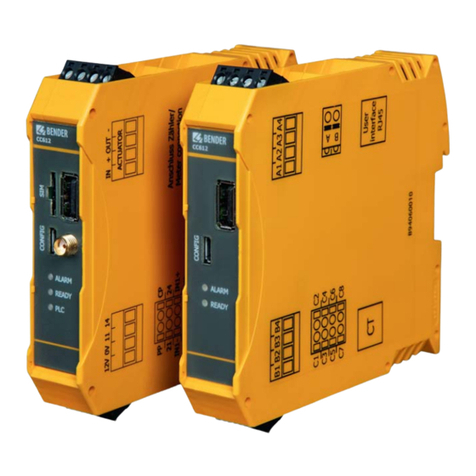
Bender
Bender CC612 User manual
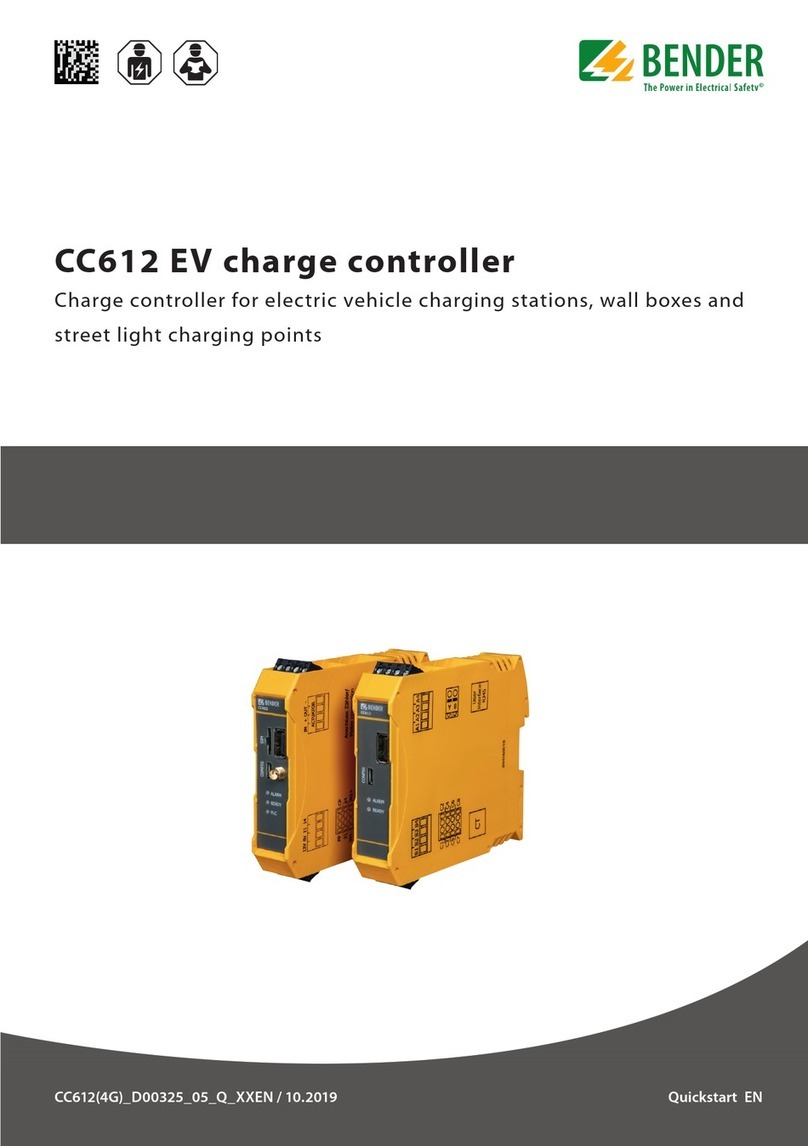
Bender
Bender CC612 EV User manual
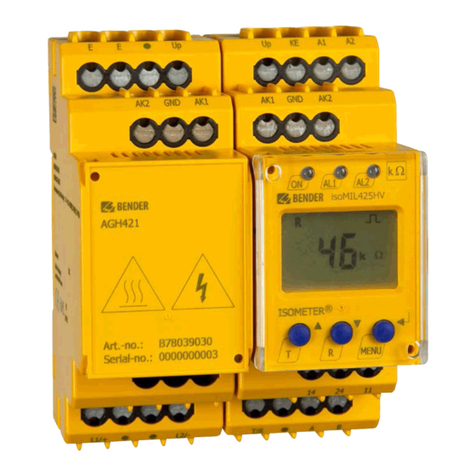
Bender
Bender ISOMETER isoMIL425HV User manual
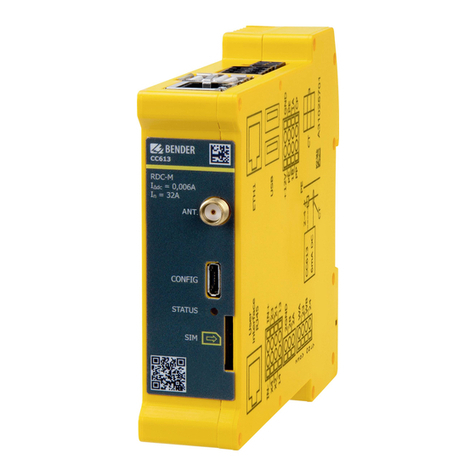
Bender
Bender CC613 User manual
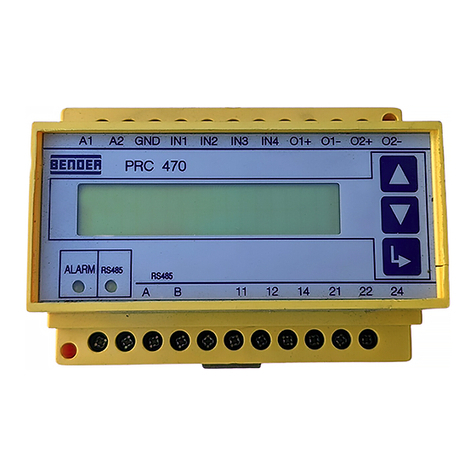
Bender
Bender PRC470 Series User manual

Bender
Bender CC613 User manual

Bender
Bender CC611 User manual
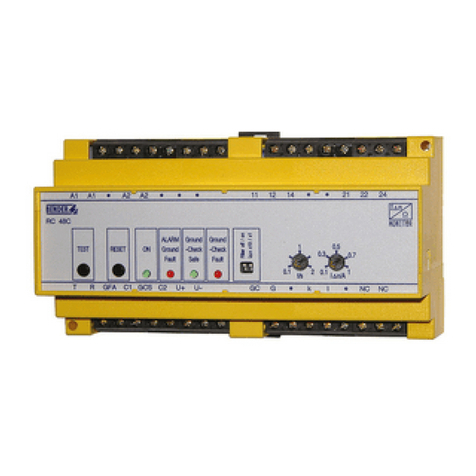
Bender
Bender RC48C User manual

Bender
Bender CC612 User manual
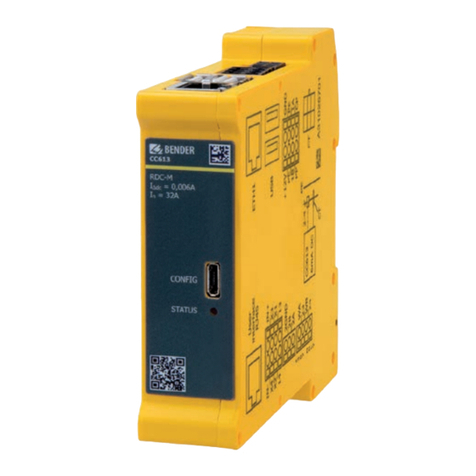
Bender
Bender CC613-H Series User manual
Popular Controllers manuals by other brands

ABB
ABB 300-line installation instructions
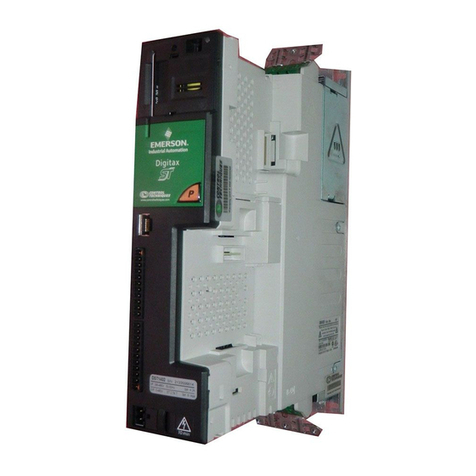
Emerson
Emerson Digitax ST user guide
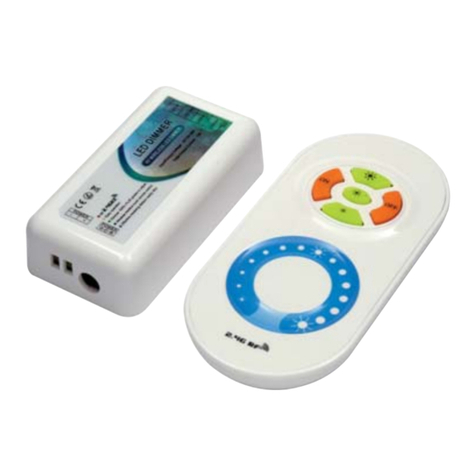
ELCART
ELCART SUPERLIGHT 13/22041-00 manual
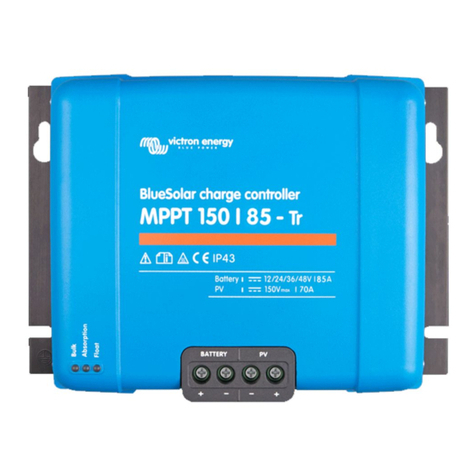
Victron energy
Victron energy BlueSolar MPPT 150/85 manual
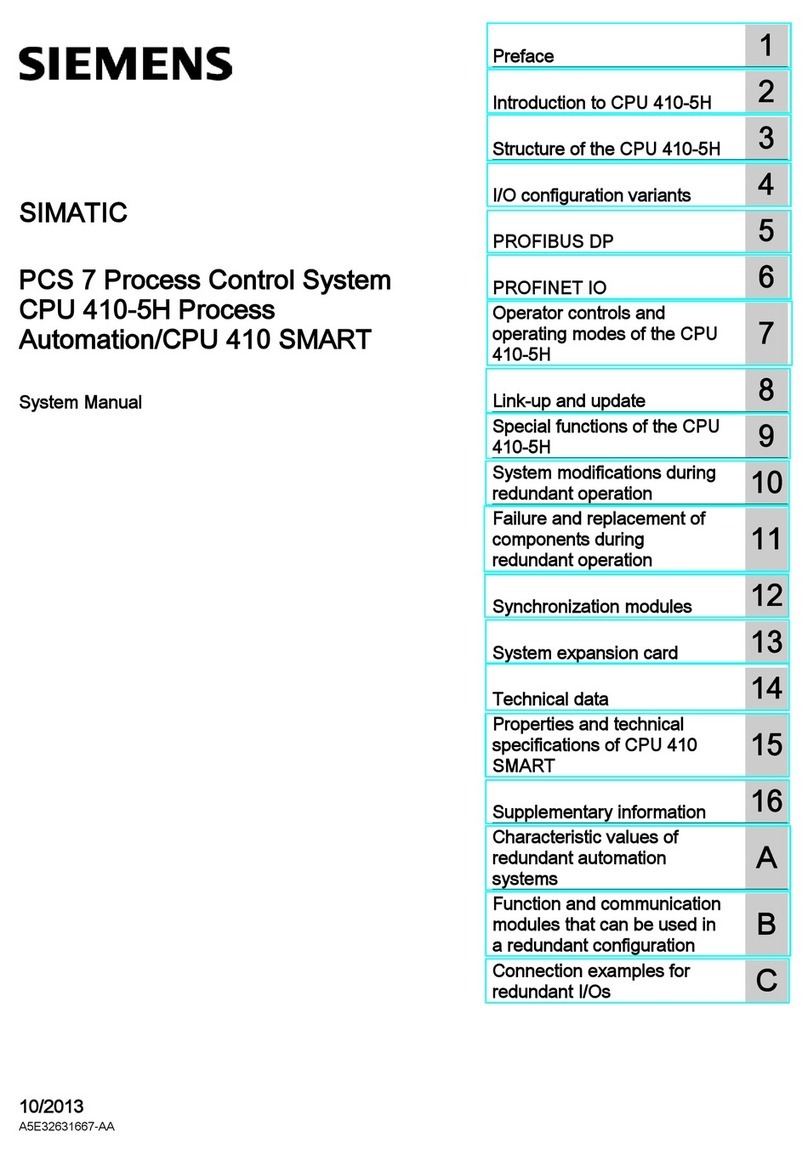
Siemens
Siemens CPU 410-5H Process Automation System manual
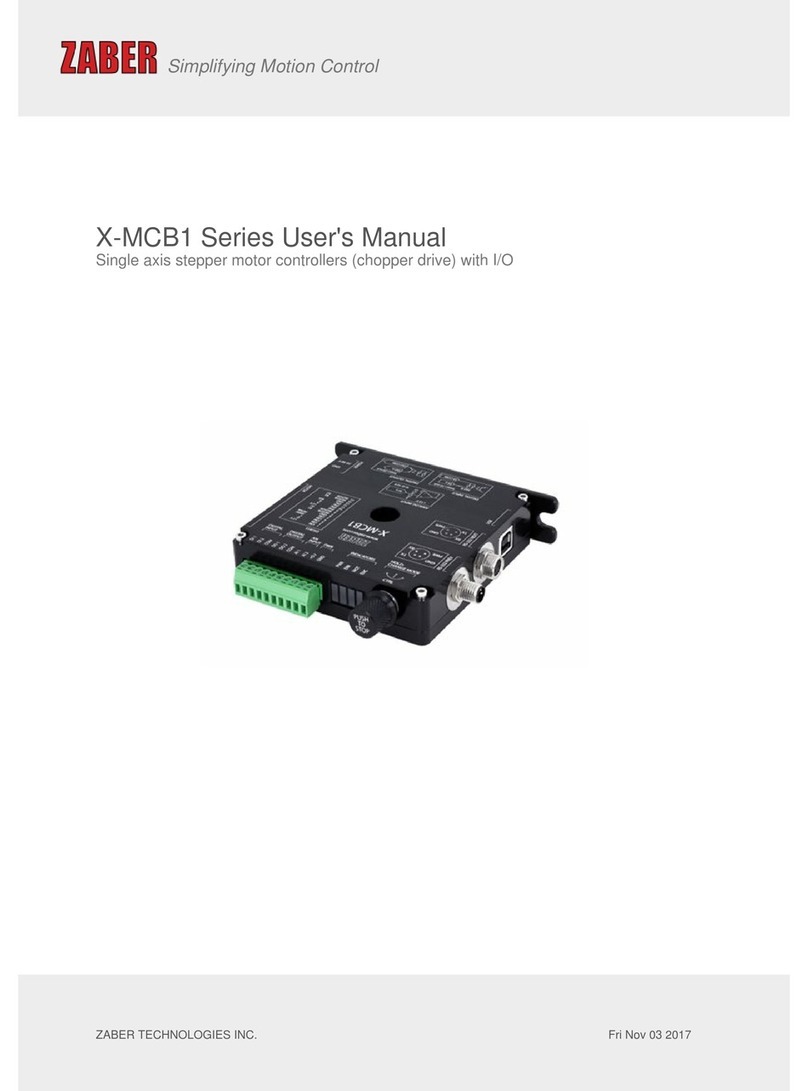
Zaber Technologies Inc.
Zaber Technologies Inc. X-MCB1 Series user manual

